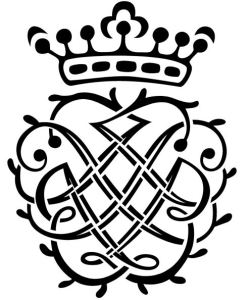Hieronymus Praetorius: Motets in 8, 10, 12, 16 & 20 Parts
Alamire, His Majestys Sagbutts and Cornetts
David Skinner, Stephen Farr
Resonus: Inventa Records. INV001. 2 CDs: 57’46 + 42’39

I have waited years for a comprehensive recording of Hieronymus Praetorius and this one ticks all the boxes. I first got to know his organ music many years ago, finding in him a very rare example of a North German organ composer from before the generation of Sweelinck students that dominated Hamburg and North German musical life in the 17th century (of which his sons were a key part). That progression eventually led to the peak of the North German Baroque, Dieterich Buxtehude. Although there were indications of the post-Sweelinck style, his musical language was distinct, if occasionally rather impenetrable, and clearly represented an important late Renaissance style of organ composition and performance. The joy of this double CD set is that several organ pieces are included, along with some of the magnificent multi-part motets, with up to 20 independent voices.
Hieronymus Praetorius was born in Hamburg in 1560, the son of an organist, Jacob. After short periods of study and work in Cologne and Erfurt, he returned to Hamburg, initially assisting, and eventually replacing, his father at the St. Jacobikirche. Over the years there, he substantially increased the size of the existing organ (notably using the Scherer family of organ builders), to become one of the largest and most famous organs in Europe. Praetorius’s organ has remained the basis of later rebuilds through the tenure of Scheidemann, Reinken, and a famous visit by JS Bach.
Praetorius (no relation, incidentally, to Michael) composed a large opus of choral music, which he collected together into five volumes as his Opus musicium during the first quarter of the 17th-century. His surviving organ pieces are found in the 1611 Visby Orgel-Tabulatur. His choral motets are strongly influenced by the Venetian polychoral style of Andrea and Giovanni Gabrieli. Although he may have been familiar with this style from manuscripts circulating throughout the German-speaking world, he probably only came into contact with composers in this style, including Michael Praetorius and Hans Leo Hassler during the famous 1596 congress in the castle church at Gröningen, Germany. There, Duke Heinrich Julius of Braunschweig-Lüneburg gathered around 50 leading organists from around Germany to test and dedicate the substantial new organ in the castle chapel.
This recording is an excellent advocate for Praetorius’s music. I am particularly pleased that they have included so much organ music, here recorded on the magnificent organ in Roskilde, Denmark, which to this day retains pipework of Praetorius’s time and before. It can replicate the distinctive sounds of Praetorius’s own organ in Hamburg. It is played brilliantly by Stephen Farr, whose choice of registrations and articulation is spot on. A specification is included in the CD booklet. Unfortunately, but understandably, the organ pieces were recorded separately in Denmark, with the plainchant of the alternatim settings recorded along with the choral works in St Augustines, Kilburn in London. This means that we do not get the distinctive sound of the Roskilde organ used to accompany the choir. The acoustics of St Augustines are excellent for the choral pieces, matching the acoustic space of Hamburg’s Jacobikirche, and the acoustics of London and Denmark are well matched.
Although some of Praetorius’s smaller scale motets have been recorded (including this recent recording) and appeared in concert programmes, this recording has managed to gather sufficient forces for the larger-scale pieces in up to 20 parts. The balance between voices and instruments is varied and well thought out, reflecting the practice of the day as well as making for a well-balanced programme. Some motets have the instruments doubling the voices, some alternate, and some are with instruments or voices alone. The choral singing is outstanding, as is the direction of David Skinner and playing of the 10 members of His Majestys Sagbutts and Cornetts. Skinner takes appropriate speeds, allowing the music to speak into the acoustic without blurring the underlying polyphony.

This important recording is an excellent introduction to the world of North German polychoral music of the 17th century, which successfully combines Venetian splendour within a Lutheran context. The new label Inventa Records is a subset of Resonus for early music and Alamire’s recordings, of which this is the first. Further information, a tracklist, and a link to the CD booklet can be found here.
Frederick K Gable, the distinguished editor of many of Hieronymus Praetorius’s vocal works, has sent me these comments, together with a list of some of the other major CD recordings of Praetorius’s vocal works.
Thank you so very much for your positive, enthusiastic, and detailed review of the new H. Praetorius CD. Having worked on this music since 1966 (!) and now preparing a five-volume complete edition of the vocal works, this review means a great deal to me.
The CD also pleases me greatly, of course, especially due to the largest-scale works receiving their first recording. The CD repertoire of HP’s music is larger and older than you suggest, however, especially those made by Weser-Renaissance. A list follows below:
Hieronymus Praetorius: Vespers for St. Michael’s Day
Weser-Renaissance 1999.
cpo 999 649-2.
Gertrudenmusik, Hamburg 1607
Göteborg Baroque Arts Ensemble, 2000.
Intim Musik IMCD 071.
Hieronymus Praetorius: Sacred Music for Double Chorus
The Choir of the Church of the Advent 2008.
ARSIS CD 165.
Hieronymus Praetorius: Magnificats and Motets
The Cardinall’s Musick 2008.
Hyperion Records CDA 67669.
San Marco in Hamburg: Motets by Hieronymus Praetorius
Weser-Renaissance 2008.
cpo 777 245-2.
Praetorius
Balthasar-Neumann-Chor und Ensemble 2015.
DGG Archiv 479 4522.
Hieronymus Praetorius: Missa in Festo Sanctissimae Trinitatis
Weser-Renaissance, 2018.
cpo 777 954-2.
Hieronymus Praetorius: Missa Tulerunt Dominum Meum
Siglo de Oro, Patrick Allies 2018.
Delphian Records DCD34208. Mass and three motets.
Reviewed here.
